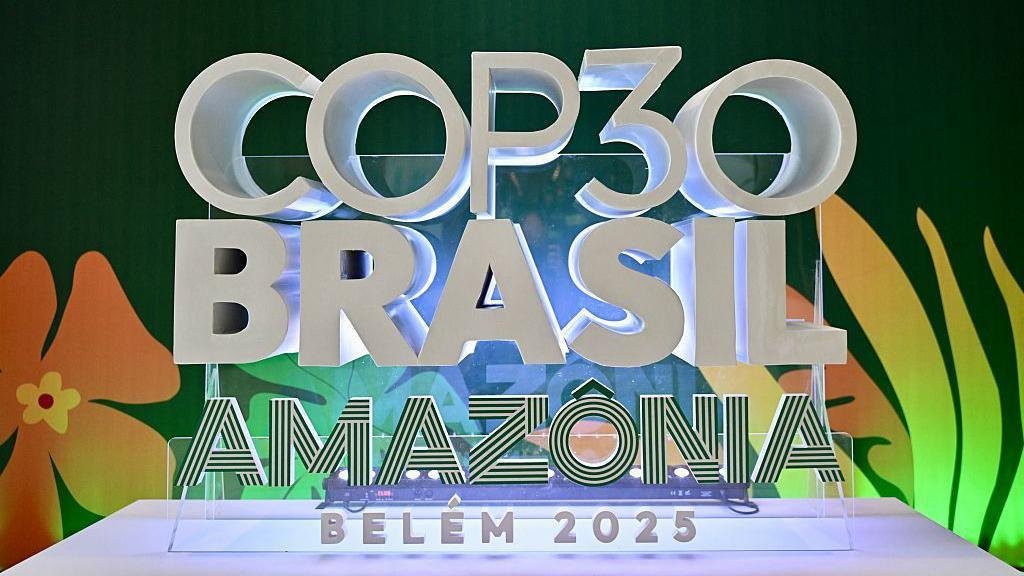
As the world stands at a crossroads on climate action, another pivotal UN Climate Conference (COP 30) is set for November 2025 in Belém, Brazil. In a time of wars, geopolitical tension, and economic uncertainty, it will be a major challenge for participating nations to negotiate and reach a consensus on emission reduction, climate finance, and smart energy transition. For the first time, a country in the Amazon region will host this global event—symbolic given that deforestation in the world’s largest rainforest has accelerated due to urbanization, industrial expansion, and agricultural pressure.
COP 30 is expected to focus on climate justice and food system reform, emphasizing a just food transition and redirecting public funds toward sustainable practices. It will also push for eliminating deforestation and integrating climate, biodiversity, land use, and food strategies coherently and equitably.
Globally, there is growing hope that COP 30 will mark a turning point for climate action, driving meaningful commitments and reform. The discussions, debates, and decisions made in Belém will shape the direction of global climate policy and determine how effectively nations transition to cleaner, more sustainable energy systems.
What has been Achieved So Far?
For nearly three decades, the United Nations Framework Convention on Climate Change (UNFCCC) has served as the main platform for global efforts to combat climate change. Through annual Conferences of the Parties (COPs), nations have worked to establish goals, rules, and institutions to guide international climate action.
Many observers believe that with the Paris Agreement and its implementation framework now in place, the rule-making phase is largely complete. The focus must now shift from policy design to concrete implementation.
COP 30 Goals and Objectives
Marking the 30th anniversary of the UN Climate Conference, COP 30 will take place in the heart of the Amazon—underlining nature’s vital role in stabilizing Earth’s systems. Delegates from about 200 nations are expected to gather to renew emission reduction strategies under the Paris Agreement.
Hosting the event in Brazil highlights the Amazon rainforest as a natural solution for climate stability. Scientists note that the Amazon absorbs about 25% of global CO₂ emissions each year, yet unchecked deforestation continues to threaten this balance. COP 30 is therefore expected to amplify calls for sustainable land use and investment in nature-based solutions, particularly in emerging economies.
The conference comes at a critical time, as nations update their Nationally Determined Contributions (NDCs). Research shows that current pledges fall short of limiting global warming to 1.5°C—and global temperatures have already breached that threshold for a full year. The responsibility now rests on every country to act decisively to protect the planet.
Key Takeaways from COP 30
· Nations will update national emission plans through 2035.
· The Amazon venue will spotlight forest conservation and nature-based solutions.
· Countries face mounting pressure to align with the 1.5°C warming limit.
· Climate finance for developing nations remains a top agenda item.
· The conference will build on previous pledges to accelerate the phase-out of fossil fuels.
To avoid catastrophic warming, global emissions must fall by 43% by 2030, according to climate scientists. More than 170 countries are expected to submit revised climate commitments by 2025, setting the stage for critical negotiations. COP 30 also aims to triple clean energy capacity and cut methane emissions by 30% by 2030, while redirecting fossil fuel subsidies—worth $500 billion annually—toward renewable energy.
Strategies for Energy System Transformation
Developing nations are calling for technology-sharing agreements to help leapfrog traditional, carbon-heavy grids. Advanced economies, in turn, must demonstrate scalable models for retiring fossil fuel infrastructure. A recent UN report notes that “energy security requires diversified renewable networks, not single-source dependencies.”
New accountability frameworks will monitor emission cuts every two years, ensuring countries stay on track with decarbonization while balancing economic growth. The success of this transformation will depend on industrial policies that include clear, sector-based net-zero roadmaps.
Mobilizing Climate Finance and Carbon Markets
Achieving global climate goals will require at least $1.3 trillion annually for developing economies by 2035. Private investors will need stronger policy signals to fund renewable projects and carbon removal technologies. As one UN climate official noted, “Blended finance models can unlock four dollars of private investment for every public dollar.”
Under Article 6 of the Paris Agreement, carbon markets are expected to expand with stricter transparency and accountability rules. These systems will enable nations to trade verified emission reductions while supporting sustainable projects—potentially generating $120 billion a year in emerging markets by 2030.
Implementing Robust NDCs
The challenge lies in integrating investment frameworks into energy, transport, and agricultural policies with clear timelines for businesses to align operations to net-zero goals. Multilateral development banks are now reforming lending practices to de-risk green projects, allowing solar farms in Nigeria and wind parks in Vietnam to attract international capital. Combined with carbon pricing, such strategies can create predictable environments for innovation.
Innovative Approaches to Global Climate Action
If countries can combine human ingenuity with the planet’s natural systems, they can build powerful defenses against environmental threats. Emerging technologies are making this possible.
Today, it is feasible to track deforestation in real time across 15 million square kilometers of rainforest. Blockchain systems can verify carbon credits with 98% accuracy, preventing double-counting. These tools support reforestation projects that store carbon and protect biodiversity.
In Brazil, Amazon “bio-industrial” zones demonstrate how sustainable rubber production can outperform cattle ranching. Similar initiatives in Indonesia and the Congo Basin are creating 40% more jobs than extractive industries. AI-powered soil sensors are helping half a million farms manage climate risk, while solar microgrids and agroforestry boost energy access and food security. Even 3D-printed coral reefs are restoring marine ecosystems while capturing ocean carbon.
Conclusion
We have only one planet to live on—and it is fast approaching a breaking point due to unchecked emissions and reckless exploitation. The coming years will decide whether the world can pull back from the brink.
The greatest challenge now lies in convincing major emitters to strengthen their NDCs, commit to real technology transfers, and provide adequate funding for climate action in developing countries. COP 30, held in the heart of the Amazon, offers a historic opportunity for nations to turn promises into progress.
Phasing out fossil fuels must be done equitably, with strong support for renewable investments and fair access to finance. Only through collective commitment and global cooperation can the world bridge the gap between ambition and action.
Let us hope that COP 30 delivers decisions rooted in shared responsibility—because our survival, and that of future generations, depends on it.
Download this Article As PDF/userfiles/EP_23_10_COPS_Saleque.pdf
Khondkar Abdus Saleque, Energy & Climate Analyst



